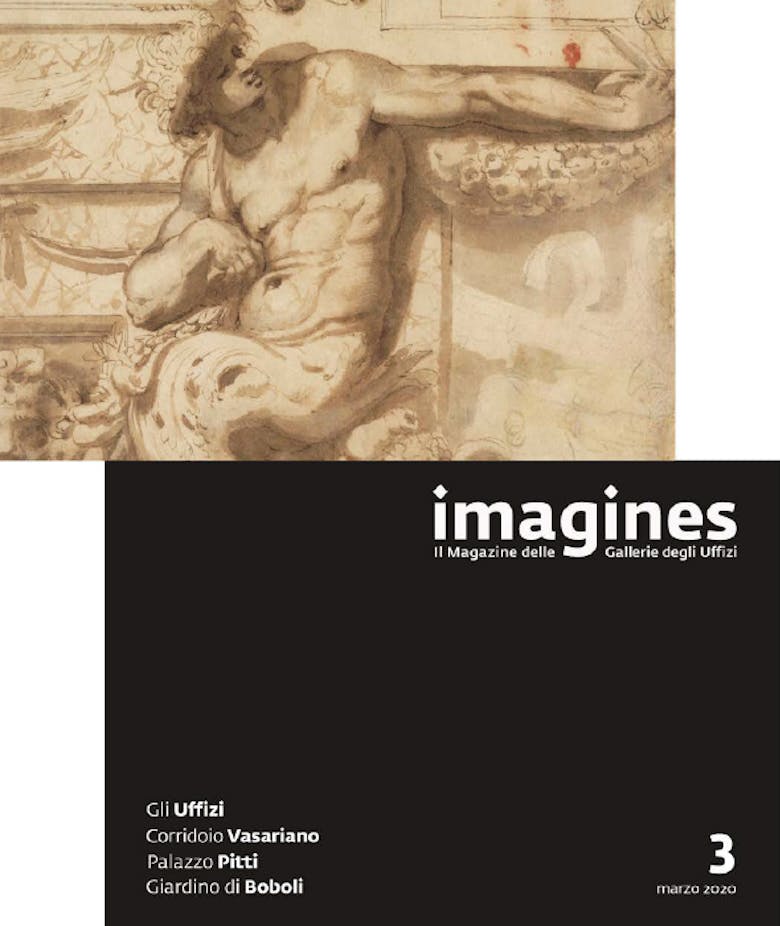La collezione di Apollonio Bassetti al Gabinetto Disegni degli Uffizi
Annamaria Petrioli Tofani
Article in italian | In 1699 a group of drawings, part of the legacy made out to Cosimo III by the Grand Duke's librarian Apollonio Bassetti, arrived at the Guardaroba of Pitti Palace. For a long time it was believed that the drawings were not identifiable within the Medici collection. This study attempts to describe the original collection through a series of checks and numerical evidence carried out on three documents kept in Florence’ s Archivio di Stato, the Biblioteca degli Uffizi and Gabinetto Disegni e Stampe archive. The Bassetti bequest, which probably constituted the largest contribution of drawings to the Medici collections before the acquisitions of the Lorena period, represents an important piece in the history of graphic art collecting in late Baroque Florence.
Un nuovo addetto all’officium admissionis: Titus Aelius Proculus, liberto adrianeo
Novella Lapini
Article in italian | This study focuses on a recent acquisition of the Gallerie degli Uffizi, the Roman cinerary urn of Titus Aelius Proculus. The funerary inscription placed by his wife, Chreste, allows us to date the life of Aelius Proculus, freedman of the Emperor Hadrian, to the first half of the 2nd century AD, and to investigate his role in the familia Caesaris. As adiutor ab ammissione he held one of the lowest levels in the ufficium admissionis, the office that regulated the admission to the Emperor’s presence and that is attested from the Augustan age up to the 4th century AD. Proculus membership in this office enables us to better define his figure, as well as to extend the evidence relating to this important Palatine department, whose influence is widely attested in literary sources.
Sulla storia collezionistica delle c.d. Iuliae Titii in Galleria
Aurora Taiuti
Il Museo degli Uffizi conserva molti ritratti di donne private che sono erroneamente identificati nell'inventario del Museo come Iuliae Titii, Domizia o Plotina a causa della loro particolare acconciatura, con masse di riccioli modellati in alte corone arcuate. A causa della loro simile chioma e dei loro uguali titoli e descrizioni negli inventari della galleria, è molto difficile ripercorrere le vicende collezionistiche di ogni ritratto.A partire dalla cosiddetta Iulia Titii conservata nel corridoio Vasariano, questo articolo vuole chiarire le elaborate sequenze di questi diversi ritratti femminili, definendo la loro data di entrata in galleria e i loro movimenti nel tempo.
Paolo Veronese’s Annunciations
Jennifer Cantu
Paolo Caliari (1528-88), known as Veronese, painted more than a dozen Annunciations, a number far greater than that of other Venetian artists of his time based on the extant Venetian works focusing on this theme. His rendition of Mary as woman of wisdom possessing serene monumentality, combined with his lavish Venetian settings made him the preferred artist for renditions of the scene in the last decades of the sixteenth century. The Uffizi’s painting, Annunciation to the Virgin, is the earliest of Veronese’s Annunciation works.
L’atto del divenire dell’immagine. Medialità e temporalità nell’autoritratto ‘poietico’ di Alessandro Allori (1555)
Fabiana Cazzola-Senkpiel
Article in italian | In the genre of self-portrait ‘in the act of painting’, artists show the moment of self-reference to their own pictorial activity. Using the example of Alessandro Allori’s Self-Portrait Fabiana Cazzola-Senkpiel discusses the relationship between the position of active hand and paintbrush and the frame of the image. The picture margins become the carriers of aesthetic self-reflection. In relation to this aspect, Fabiana Senkpiel describes the conditions of appearance of the work of art. The article follows thus the role of temporality in the self-portrait by Alessandro Allori and deals with the category of poiesis, in order to draw some conclusion from the self-portrait ‘in the act of painting’ concerning the understanding of the generation of the image’s iconic meaning.
The Galleria degli autoritratti in the Uffizi. Notes on a Research Project on the Conditions of Artistic Production, Modes of Reception and Systems of Organisation in the Context of an Early Modern ‘Special Collection’
Valeska von Rosen
The article provides an outline of the research project on the Galleria degli autoritratti which seeks to reconstruct the relevant practices associated with the establishment, the organisation and the public display of this collection of paintings, considering the fact that the Galleria is a special case in that it focuses on just one particular genre. The period being examined stretches from the collection’s establishment and systematisation by Leopoldo and Cosimo III to the completion of its transformation into a well-published, state-run collection accessible to the general public towards the end of the 18th century. It is further assumed that the existing evidence will make it possible to indirectly reconstruct the conditions under which the artists were producing their works
Alessandro Mazzanti, restauratore di “somma diligenza e rara perizia”
Maria Vittoria Thau
Article in italian | Mostly known for his participation in the application of the Pettenkofer method on Titian's Venus of Urbino, this study revealed Mazzanti's abilities as a restorer, capable of gaining the confidence of the Directorate of RR. Florentine galleries in the second half of the nineteenth century, as well as his work as a painter-portraitist, consultant and art expert for the Hospital of Santa Maria Nuova. Specialized in the restoration of the structural component of paintings even more than in pictorial restoration, thanks to his many and unquestionable skills as well as his human and professional seriousness, he became a very popular figure in the Florentine restoration circles, in the wake of the Florentine conservative tradition but also in line with the ministerial dictates of the time.
